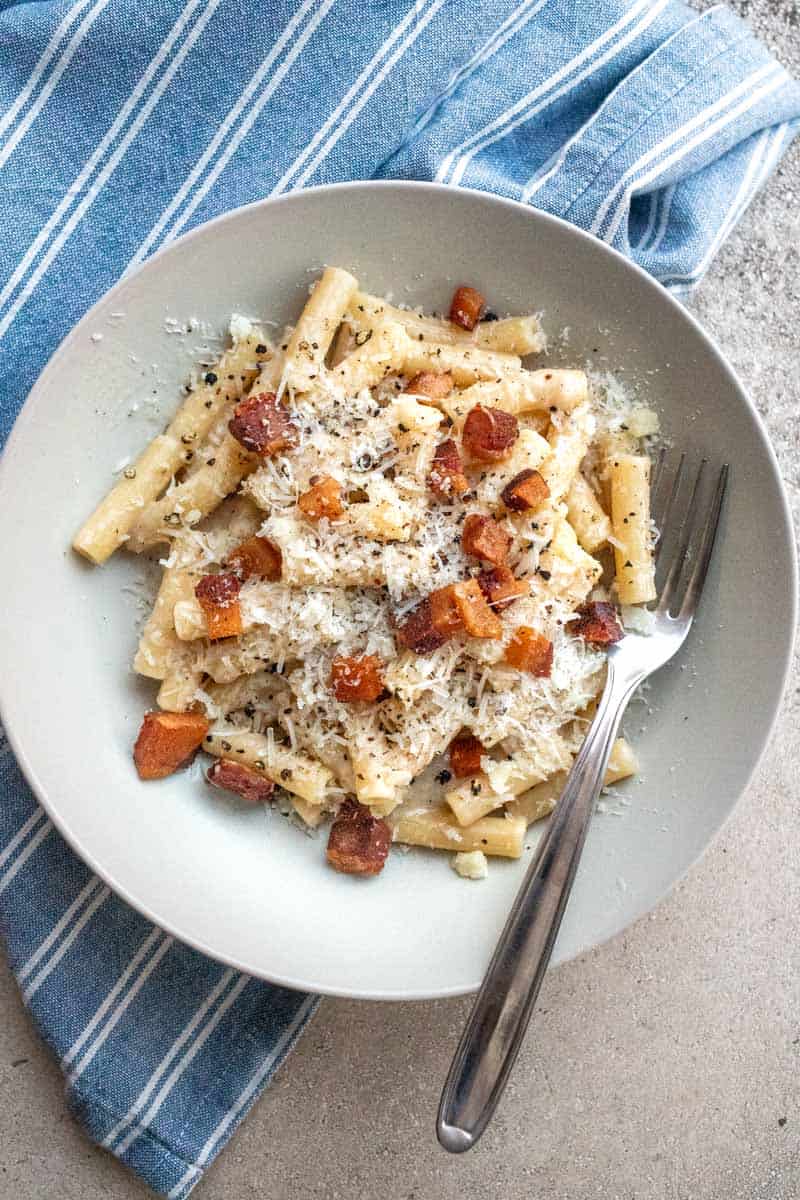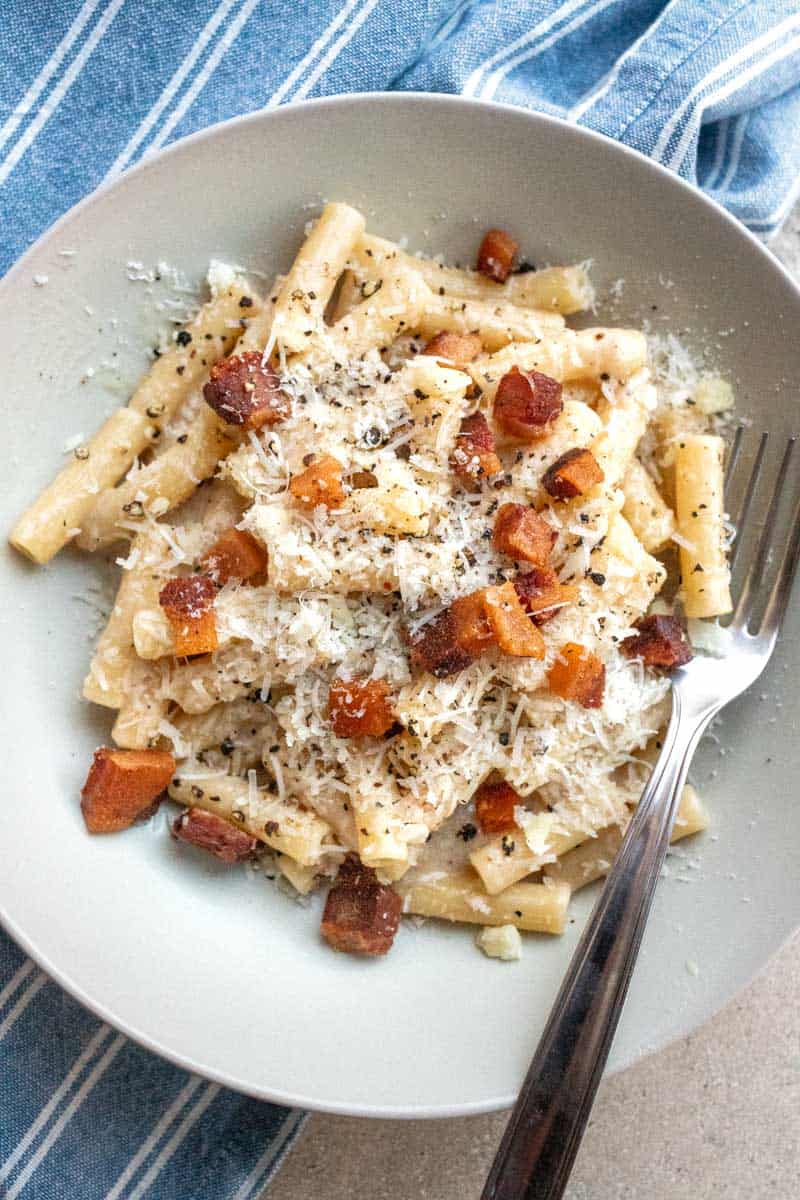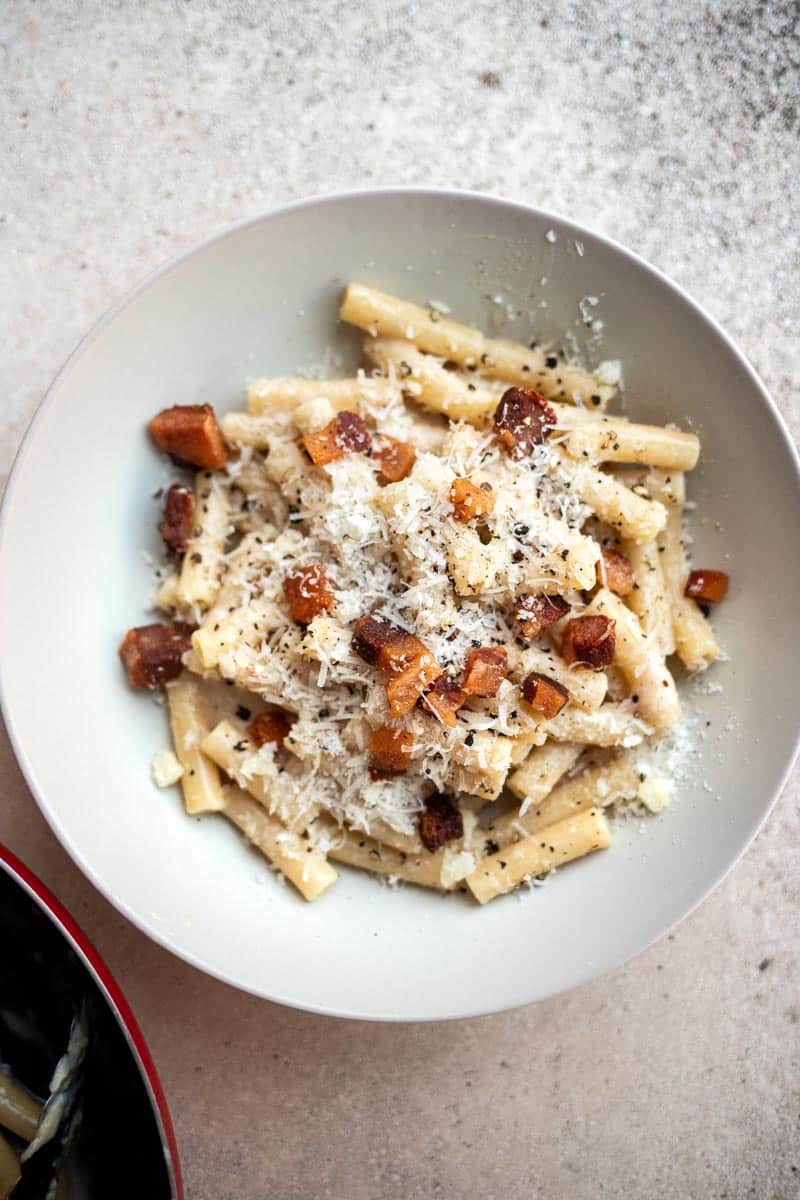Pasta alla Gricia is one of the four quintessential Roman pastas, and although often overlooked by its more popular sibling pasta dishes (we’re looking at you, cacio e pepe, carbonara, & amatriciana), it’s just as irresistable as the others. Made with a generous amount of pecorino romano, crispy guanciale (pork cheek), and fresh cracked pepper, this dish is the essence of understated perfection.

This recipe is inspired by the Pasta alla Gricia from Trattoria Da Cesare al Casaletto in Rome, which makes the best Pasta alla Gricia you will ever consume in your life (see our guide to the best restaurants in Rome here).

Pasta alla Gricia: Tips and Tricks
This Roman pasta dish isn’t terribly fickle, but a few things to remember for the best end result:
- Use finely grated pecorino romano. We recommend using a microplane zester so that your cheese is ultra fine and becomes one with the pasta and pasta water easily. Do not use pre-grated cheese, which often contains chemicals and will prevent your cheese from transforrming into a glossy, beautiful coating when combined with pasta water.
- Don’t overcook the pasta. You’ll pull it from the pasta water when it’s about 1 minute from reaching al dente (usually 2-3 minutes less than package directions). The pasta will continue to cook as you toss with the rendered fat and pasta water. There’s nothing worse than overcooked pasta- promise!
- Guanciale is a very traditional ingredient used in Roman cooking, but when in doubt use pancetta. Don’t have pancetta? Bacon will work too.
- Don’t be afraid to generously sprinkle copious amounts of grated pecorino romano and fresh cracked pepper on top after plating this pasta- something you’ll see at almost all traditional Roman restaurants.
- If you don’t have pecorino romano on hand and choose to use parmigiano reggiano instead, be aware that you may need to add more salt- taste as you cook!

Pasta alla Gricia
Ingredients
- 12 ounces pasta
- 2 Tablespoons extra virgin olive oil
- 6 ounces guanciale*
- 2 ounces pecorino romano or parmigiano-reggiano, plus more for serving
- 1 teaspoon fresh cracked pepper, plus more for serving
- kosher salt to taste
Instructions
- Bring a large pot of generously salted water to a boil.
- While the water is coming to a boil, prepare and cook the guanciale. Trim off the skin and cut into roughly 1/2 x 1/2 inch squares. Bring a large dutch oven to medium heat. Add olive oil and guanciale. Cook guanciale until crisp and golden brown, about 7-8 minutes, turning guanciale as needed to evenly cook, and remove from heat. Using a slotted spoon, remove guanciale from dutch oven and set aside. Keep rendered fat in the dutch oven, about 1/4 cup. If fat rendered from pork exceeds this, discard and keep the 1/4 cup in dutch oven .
- Once water is boiling, add pasta. Cook until a "hard al dente" (usually 2-3 minutes less than package instructions). Pasta should be cooked but still very firm. While the pasta is cooking, prepare cheese. Finely grate 2 ounces of pecorino romano cheese and set aside. When the pasta is almost done cooking, reserve 3/4 cup of the starchy pasta water and set aside.
- Bring reserved fat/oil back to medium high heat in the dutch oven. Add the teaspoon of fresh cracked pepper to the dutch oven and cook for 1 minute, until aromatic and toasted. Add 1/2 cup of the pasta water to the dutch oven, and swivel around for a few seconds. Add hard al dente pasta to dutch oven and gently toss together for about 1-2 minutes, until the pasta has cooked slightly (should be a true al dente now) and the majority of the pasta water has evaporated. Remove from heat.
- Add pecorino to pasta, stirring vigorously (this prevents clumping of cheese) until well combined. The cheese combined with the pasta water and rendered fat should transform into a glossy coating over pasta. You may add additional pasta water if needed, one tablespoon at a time. Taste pasta and ensure it is salted adequately- add more if needed.
- Plate the pasta and top with a generous amount of additional fresh cracked pepper and grated pecorino romano. Divide crispy guanciale evenly between plates and place on top of pasta. Serve immediately.
Notes
Did you make this recipe?
Tag @femalefoodie so we can see what you're cooking!

